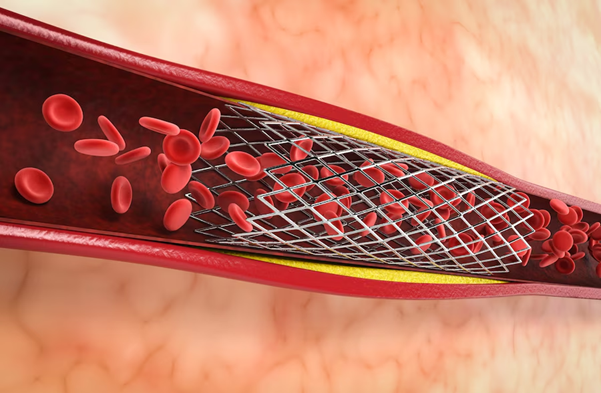It is also known as coronary angioplasty. It is a medical procedure used to open narrowed or blocked coronary arteries in the heart. This is usually done by putting a thin tube with a deflated balloon into the clogged artery and then inflating the balloon to compress the plaque buildup, thus widening the artery, and restoring blood flow to the heart muscle. In some cases, a stent (a small mesh tube) is inserted to help keep the artery open.
Determining the Need for PCI
When fatty deposits (plaque) accumulate and block the blood vessels in your heart, it causes chest pain (angina) or even a heart attack. PCI helps to improve blood flow to the heart muscle, relieving symptoms and preventing further heart damage.
Inside PCI: A Procedural Breakdown
- Medication is given for relaxation
- Small incision made in groin or wrist
- Thin catheter inserted into an artery
- Catheter advanced to the blocked area
- Balloon inflated to widen the artery
- Stent inserted if needed
- Catheter was removed, and the incision closed
Post-Procedural Care and Recovery
- Hospital stay for observation
- Rest advised initially
- Medications prescribed for blood clot prevention and cholesterol management
- Improved blood flow to the heart.
- Enhanced overall well-being experienced by most patients.
Navigating Risk-Benefit Analysis in PCI
- Bleeding
- Infection
- Damage to the artery
Benefits
- PCI can significantly improve heart health
- Enhances quality of life for many patients
Post-PCI Follow-Up Care
- Schedule regular follow-up appointments.
- Follow medical instructions
- Lifestyle modifications (e.g., healthy diet, exercise).
- Monitoring for any signs of complications.
- Support resource
It is a pivotal intervention in the management of coronary artery disease. While it carries inherent risks like bleeding, infection, and arterial damage, the benefits often outweigh these risks. By significantly improving heart health and enhancing the quality of life for many patients, PCI remains a cornerstone in the arsenal against cardiovascular disease. With technological advancements and ongoing research, PCI continues to evolve, offering hope and healing to countless individuals worldwide.

